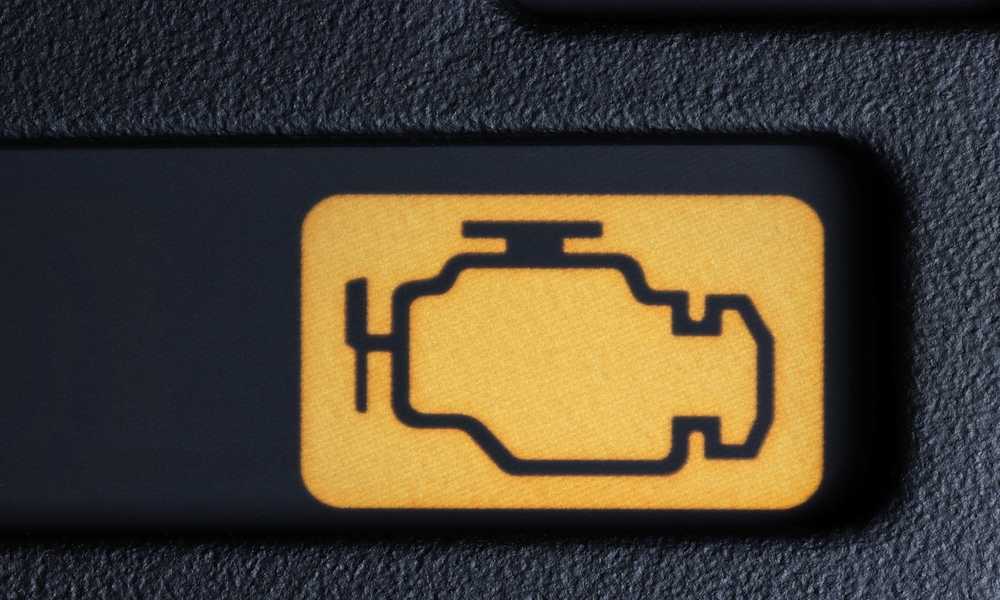Your Buick’s check engine light has you losing sleep, right? You’re not the only one feeling this way. Every automobile owner has felt the anxiety that comes with seeing the check engine light. That glowing icon on your dashboard has the potential to give you the creeps. Don’t worry, though; this essay will explain why your Buick check engine light illuminated and what you can do about it. Get ready to turn off that annoying “check engine” light for good!
What causes the check engine light to come on in a Buick?
1. Loose gap cap

An untightened gas cap is a common cause of the Buick’s check engine light to turn on. It might not seem like a huge deal, but it can have a significant effect on your car’s performance.
It is possible for fuel vapors to escape from the tank if the gas cap is loose or missing. Because of this, the normal pressure balance in the fuel system is disturbed, and the check engine light is activated.
If you see that your check engine light has illuminated, one of the first things you should do is double-check the gas cap. Verify that it is properly tightened and in good shape. Whether it’s loose or broken, it should be swapped out for a new one.
Possible solutions to the problem that triggered the check engine light include tightening or replacing the gas cap. However, if the light persists after several driving cycles have passed and the gas cap has been tightened or replaced, there may be another underlying problem.
It’s crucial that you heed this warning, as continuing to drive with the check engine light on could result in irreparable harm to your car. Instead, have a reputable mechanic examine the diagnostic fault codes stored in your Buick’s onboard computer system and make the necessary repairs.
2. Spark plugs
Your Buick’s engine wouldn’t run without spark plugs. These tiny but vital parts ignite the air-fuel mixture inside each cylinder, generating the power needed to move your car ahead.
Spark plugs wear out and get clogged over time, which can cause a number of problems. For instance, if a spark plug is rusted or unclean, it won’t be able to produce a sufficient spark to ignite the gasoline. Misfires, decreased fuel efficiency, and even component failure are all possible outcomes of this problem.
Spark plugs should be changed at predetermined intervals to ensure peak performance and avoid any malfunctions. Manufacturer guidelines vary, but they typically call for replacement every 30,000–50,000 miles.
If your car’s check engine light comes on because of worn out spark plugs, you should have them replaced immediately. The longer you drive with worn or broken spark plugs, the higher the chance that you’ll need to pay for expensive repairs.
If you’re having trouble with your vehicle’s spark plugs, you should go to a professional mechanic. They will give you an accurate diagnosis of the problem and instructions for fixing it or replacing it.
If you care about your car’s long-term health and performance, you should never ignore the warning lights it displays. If you’re willing to take care of issues like faulty spark plugs right away, you can keep your Buick operating smoothly for a very long time.
3. Catalytic converter

Your Buick’s check engine light may have been activated because of an issue with the catalytic converter. The catalytic converter is a vital component in the exhaust system of your car since it filters out hazardous gases.
Catalytic converter problems, such as clogging or damage, are common causes of the “check engine” warning. The accumulation of too much carbon or the introduction of foreign substances due to oil or antifreeze leaks are two possible causes.
Reduced fuel efficiency and subpar performance are possible outcomes of a broken catalytic converter. Strange exhaust odors or amplification of engine noise are also possible outcomes.
If your catalytic converter is malfunctioning, you should probably just get a new one. Continuing to drive with a broken catalytic converter can cause more damage and more emissions, so fixing it as soon as possible is crucial.
If your Buick’s check engine light is on and you suspect the catalytic converter is at fault, you should take it to a mechanic that specializes in vehicle emission systems for a proper diagnosis and repair. They will be able to identify the problem and give you a workable solution.
4. Oxygen sensor
The oxygen sensor in your Buick’s engine is a crucial part of the system that measures how much oxygen is present in the vehicle’s exhaust. Based on this data, the car’s computer may fine-tune the fuel-to-air ratio for maximum efficiency. The oxygen sensor can cause the check engine light to turn on if it becomes faulty.
There are a few typical causes of oxygen sensor failure. Because sensors degrade with use and age, this is one possible explanation. Oil or coolant leaks are another possible culprit, as their contaminants can wreak havoc on the sensor. When sensors are subjected to extreme temperatures or chemicals, they can malfunction.
You should not delay in getting the oxygen sensor replaced if your Buick’s check engine light comes on. If you disregard this problem, it could compromise the vehicle’s emission control system and reduce fuel efficiency.
A defective oxygen sensor can be fixed by swapping it out for a new one. It is suggested that you seek the advice of a qualified mechanic who is familiar with Buicks and their unique powertrains.
To avoid problems with the check engine light and to keep your Buick running smoothly, it is essential to undertake routine maintenance and checkups.
5. Mass air flow sensor

The Mass Air Flow (MAF) sensor is an important part of your Buick’s engine. It monitors the airflow into the engine to ensure accurate fuel distribution and efficient combustion. If this sensor fails, the engine warning light may turn on.
Contamination by dirt, debris, and residual oil was a common cause of MAF sensor failure. This can lead to erroneous readings and a decrease in engine efficiency. The MAF sensor should be cleaned or replaced if it is not working properly.
The MAF sensor may also have an electrical connection issue. A sensor’s ability to talk to the rest of the engine could be compromised by loose cables or rusted contacts. If there are any broken connections, checking and fixing them should fix the problem.
Eventually, the MAF sensor will wear out and need to be replaced. Keeping up with routine checks and servicing might help you know when to replace it.
Mass air flow sensor problems should only be diagnosed and repaired by a certified mechanic with prior experience working on Buick automobiles.
How to fix Buick check engine light?
Don’t freak out when your Buick’s check engine light comes on. It’s concerning, but there could be a number of reasons for it. You may take action to address and resolve the issue, which is good news.
A loose gas cap on your Buick could cause the vehicle to display an error message. It could be as easy as retightening or replacing the gas cap.
Next, the check engine light may come on if the spark plugs are old or not working properly. Changing the spark plugs should rectify the situation here.
A broken catalytic converter could also be to blame. A malfunction in this part is a common cause of the “check engine” warning light to turn on. Fixing or replacing the catalytic converter is likely to be required.
In addition, the malfunction of an oxygen sensor might trigger the engine warning light to come on. The sensor has to be replaced, and that should fix the issue.
Your Buick’s check engine light could be on because of a faulty mass air flow sensor. It’s possible that fixing this sensor will need either cleaning it or replacing it.
Keep in mind that these are only some of the many probable reasons why your Buick’s check engine light has come on, and that any repairs you make are done so at your own risk. If your car is giving you trouble, it’s advisable to take it to someone who specializes in troubleshooting and repair.
Why is my check engine light on GMC?
Many GMC car and truck owners have probably wondered this. If your car’s check engine light has illuminated, there are probably a few things going on.
A faulty gas cap may be at blame. A loose cap, of all things, can actually cause the check engine light to come on. If you’ve just filled up your tank, make sure the gas cap is on nice and tight.
Misfires can also be caused by spark plug failure. The spark plugs in your car’s engine are essential for starting the combustion process. When they are worn out or unclean, it can lead to misfires, which in turn will cause the check engine light to come on.
A broken catalytic converter is another possible cause. This part is essential for lowering your vehicle’s exhaust emissions. If it breaks, it might increase pollutants and cause the engine warning light to come on.
The oxygen sensor is another common reason of a malfunctioning check engine light. These detectors keep an eye on the percentage of oxygen present in your exhaust gasses and adjust the engine’s performance accordingly. Reduced fuel efficiency and increased emissions could be the result of a defective sensor.
The mass air flow (MAF) sensor may be faulty. The mass air flow (MAF) sensor calculates the ideal fuel-to-air ratio for each cylinder by monitoring airflow into the intake manifold. If something goes wrong, it can throw off the equilibrium and cause the warning light to come on.
Keep in mind that these are only a few of the many potential reasons why your GMC’s check engine light is on. Always seek the advice of a qualified mechanic, who can use diagnostic equipment to determine the precise nature of the problem prompting the illumination of the warning light in question.
Will the check engine light reset itself?

Does the “check engine” light reset automatically? This is a question many Buick drivers have when they notice the dreaded warning light flashing on their instrument panel. The truth is that it is conditional on the root of the problem.
In rare circumstances, the check engine light may reset after a specified number of miles driven if the underlying cause of the warning has been fixed and no additional problems are present. This, however, may change depending on the Buick’s make, model year, and other factors.
Even if the check engine light goes out by itself, the issue codes will still be saved in your car’s computer. A skilled technician should use a diagnostic instrument to read and clear these codes to ensure an accurate diagnosis and the absence of any underlying issues.
In other words, the check engine light might go off by itself if specific conditions are met, but this is by no means a given. Taking care of problems as soon as possible will save you money and keep your Buick running smoothly.
How much does it cost to have the engine light checked?
The cost to get your Buick’s check engine light checked might range from free to several hundred dollars. It’s worth noting that several auto parts companies provide free diagnostic scans to examine the check engine light codes. In the interest of frugal living, this may serve as a helpful jumping off point.
If you opt to take your Buick to a professional technician or dealership, however, you can expect to pay money. Depending on your location and the extent of your repair, the price may be as little as $50 or as high as $200.
Remember that this is only the price of determining the problem and does not include the price of any necessary repairs. Once the issue has been isolated, further expenses may be incurred if, for example, expensive replacement parts or lengthy repairs are needed.
It’s also a good idea to browse about and compare prices before settling on a repair, since some may offer specials or discounts for checking out the check engine light.
A professional inspection of your Buick’s engine light will likely incur some expense; nevertheless, ignoring this warning sign could lead to more extensive damage and more expensive repairs down the road.
How many miles can you drive with the check engine light?
When driving a Buick and the “check engine” warning light comes on, you should not delay in getting the problem fixed. Ignoring it may cause more severe issues in the future. When the “check engine” light comes on, a common concern is how far one can drive before having to get the problem fixed.
Regrettably, there is no simple solution to this problem. The check engine light’s maximum safe driving distance is directly proportional to the nature of the problem that triggered the signal.
Sometimes, you can put hundreds of miles between you and any problems. Sometimes, though, driving with the check engine light on might really be harmful to the vehicle or to fuel economy.
It’s better to be safe than sorry, so if you see the check engine light come on, don’t delay getting your car checked out by a professional mechanic. They can identify the source of the problem and fix it before it becomes catastrophic.
Putting in the time and effort to maintain your Buick today can save the need for pricey repairs down the road.
Buick check engine light codes

Codes shown by your Buick’s check engine light can shed light on exactly what’s going wrong. The on-board diagnostics system of the vehicle generates these codes when it detects problems with any of the vehicle’s subsystems or components.
If your Buick’s check engine light comes on, you should use a diagnostic scanner or code reader to get these codes. Each code represents a different component that may be malfunctioning, such as the oxygen sensor, fuel system, ignition system, or emissions control system.
You can learn more about what triggered the check engine light by looking up the corresponding code. Despite the useful information about potential issues, the codes cannot always be relied upon to identify the precise source of a problem.
Once you have the Buick check engine light codes, you should take your car to a professional mechanic or technician for further diagnosis and repair. They will utilize their extensive knowledge and cutting-edge diagnostic equipment to pinpoint the source of the issue and implement a permanent fix.
Finally (Remember: never finally!) Learning what the codes mean when they appear on your Buick’s dashboard is a big assistance when trying to figure out what’s wrong. You can keep your Buick running smoothly and efficiently by getting the codes and having them looked at by a competent mechanic when they’re needed.
Final thoughts
The check engine light in your Buick can be a source of frustration and concern. However, it’s important to remember that it serves as an early warning system, alerting you to potential issues with your vehicle.
When the check engine light comes on, don’t panic. Take a deep breath and try to determine the cause. It could be something as simple as a loose gas cap or a more complex issue like a faulty catalytic converter.
If you’re unsure about the cause or how to fix it, don’t hesitate to take your Buick to a trusted mechanic or dealership. They have the knowledge and tools necessary to diagnose and repair any problems.
Remember that ignoring the check engine light can lead to more serious damage down the line. So, always address the issue promptly for both peace of mind and overall vehicle health.
While seeing that dreaded check engine light may initially cause anxiety, there are several common causes for its activation in your Buick. By understanding these causes and taking appropriate action when needed, you can keep your Buick running smoothly for years to come!



